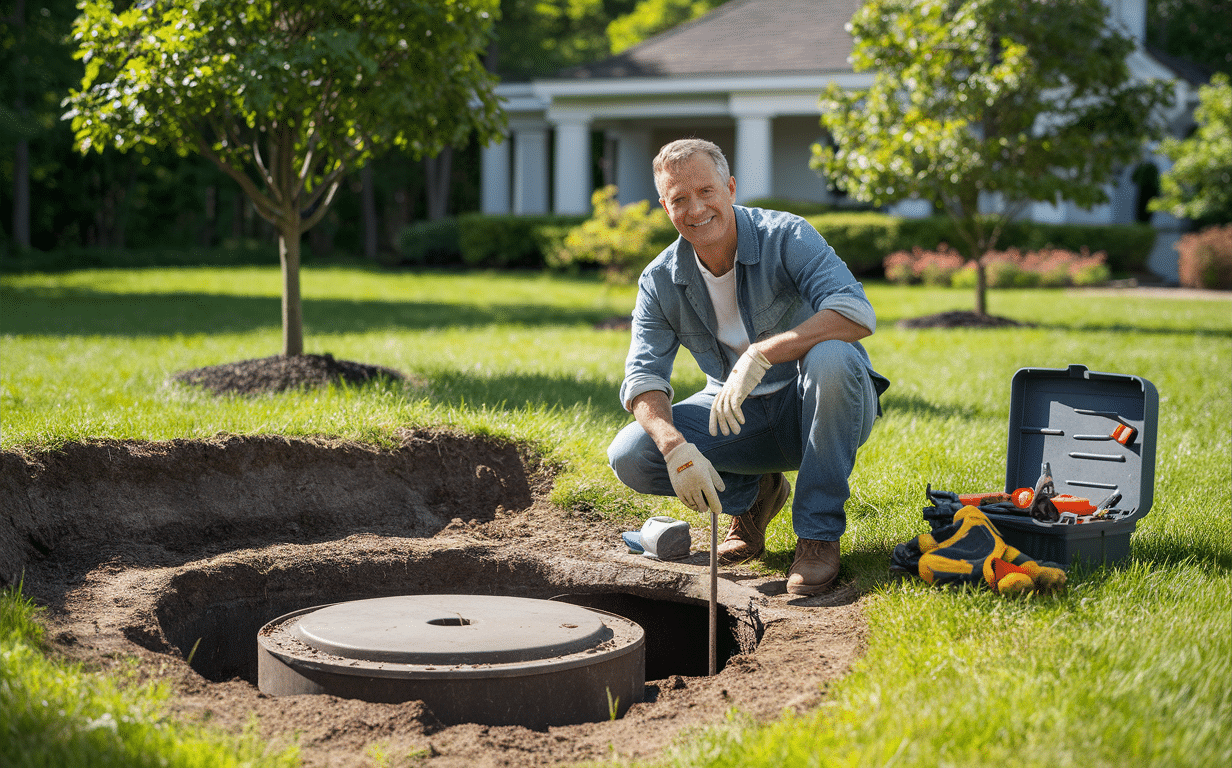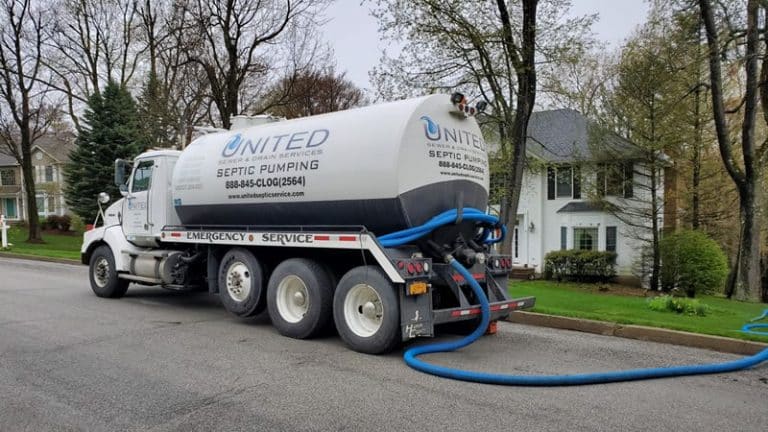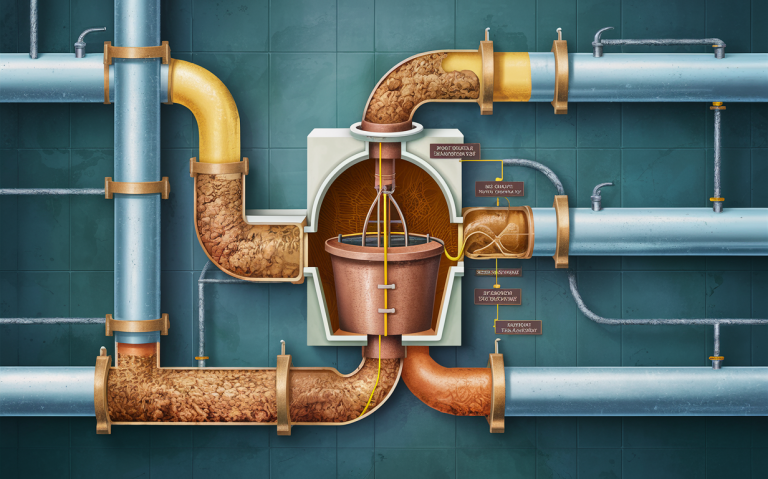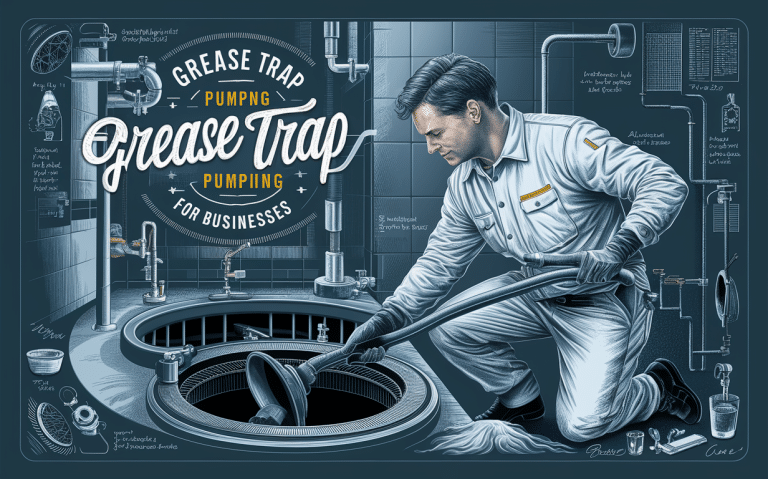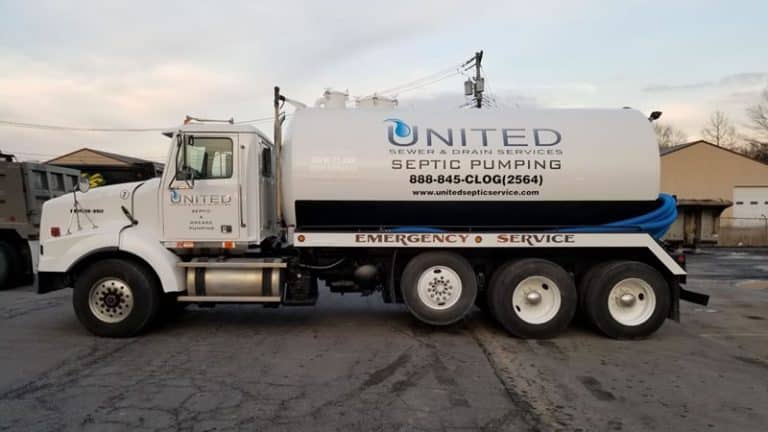Locating and Accessing the Septic Tank: Easy DIY Guide
Locating and Accessing the Septic Tank is crucial for maintenance. Learn tips, tools, and when to call professionals to keep your system efficient.
Knowing how to locate and access your septic tank is vital for regular maintenance and ensuring your system runs efficiently. This guide will provide you with practical tips and actionable steps to identify and reach your septic tank without unnecessary hassle.
Key Takeaways
- Importance of locating your septic tank: Regular maintenance prevents costly repairs.
- Signs to look for in your yard: Green patches, slight depressions, and sewer lines.
- Essential tools: Soil probes, septic maps, and local records.
- Professional help: When and why you might need it.
Why It’s Important to Locate Your Septic Tank
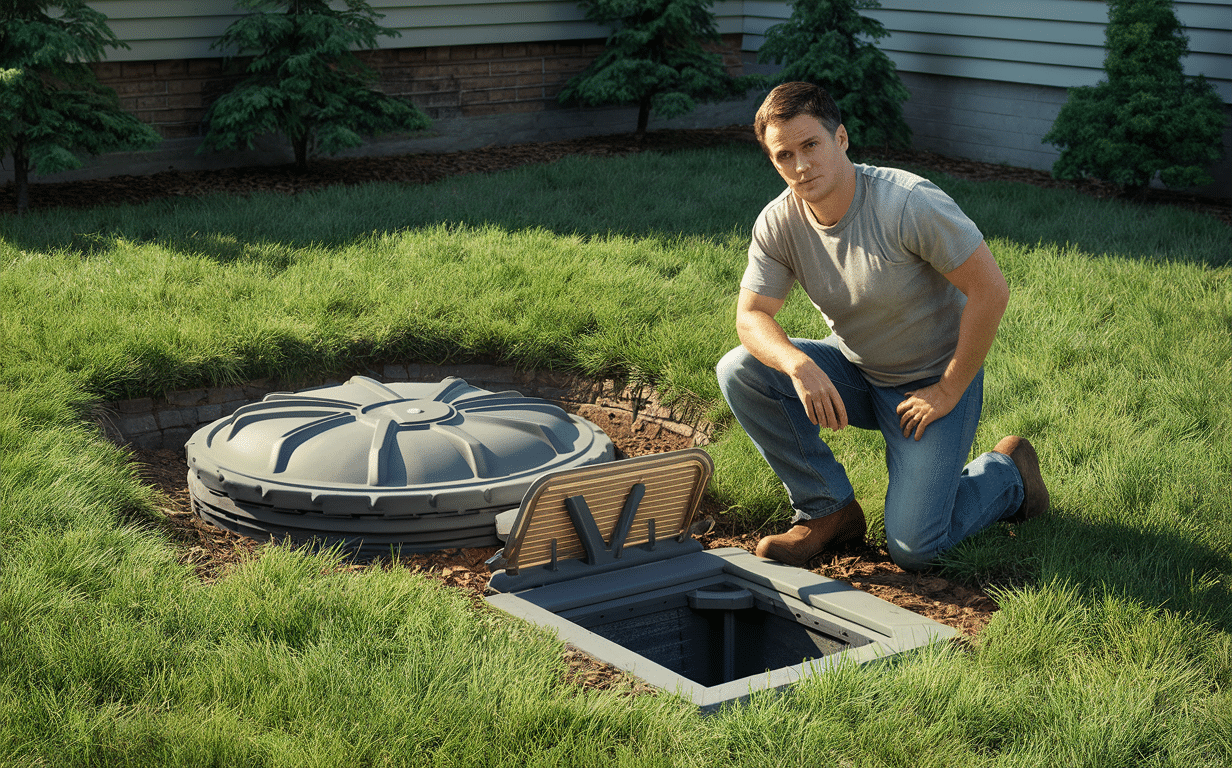
Routine maintenance of your septic tank is crucial for ensuring its smooth operation and preventing costly repairs. Identifying the septic tank’s location is the first step in this essential maintenance process. Here are some key points to consider:
- Consult the property’s records or blueprints to locate the septic tank’s approximate position.
- Look for visual clues like a slightly raised or depressed area in the yard, a manhole cover, or a vent pipe protruding from the ground.
- Once located, mark the spot clearly to avoid accidentally driving or building over the septic tank.
- Regular pumping is recommended every 3-5 years, depending on the tank size and household usage.
- Inspections should be performed annually to check for cracks, leaks, or other issues that may require repairs.
- Avoid flushing non-biodegradable items, chemicals, or excessive amounts of cooking oils and grease, as they can disrupt the septic system’s natural bacterial processes.
- Divert roof and surface water away from the septic tank and drainfield to prevent overloading the system.
- Consider hiring a professional septic service provider for safe and efficient maintenance and inspections.
By following these steps and maintaining your septic tank regularly, you can extend its lifespan, protect the environment, and avoid costly repairs or replacements in the future.
Signs to Look for in Your Yard
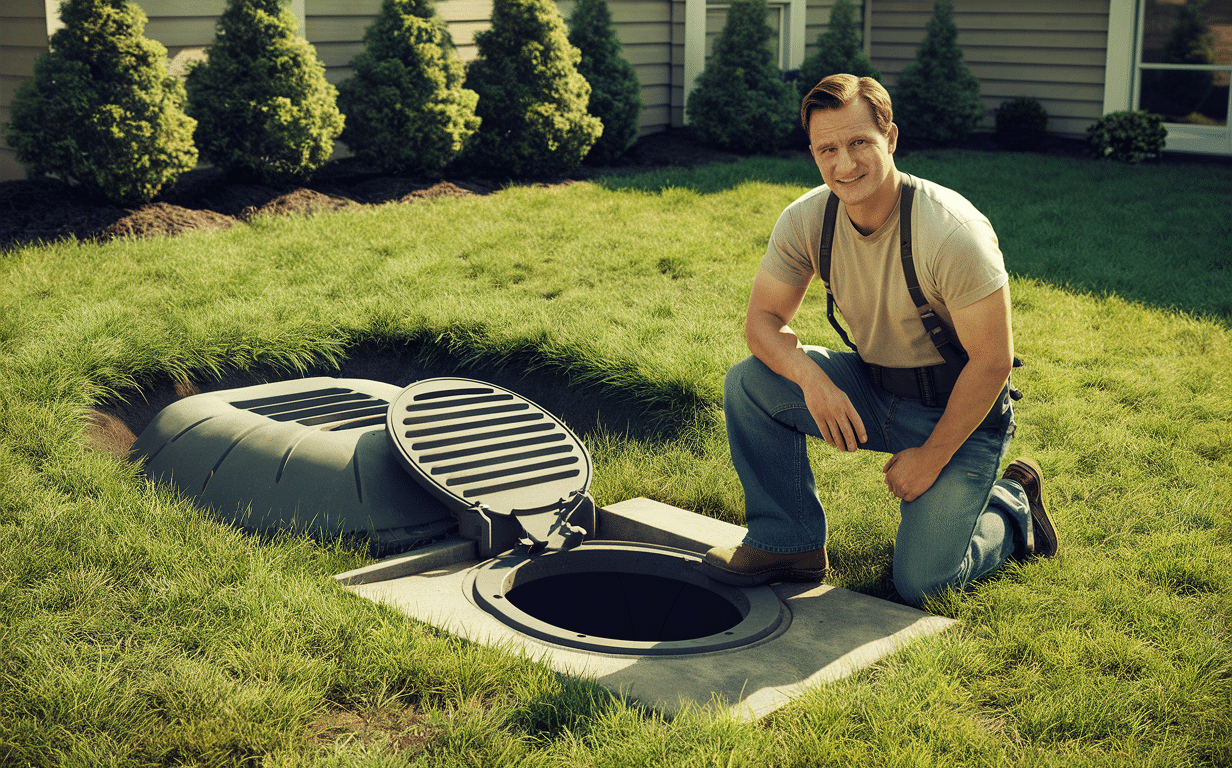
Green Patch of Grass
One common indicator of a septic tank’s location is a noticeably greener patch of grass. The extra nutrients from the tank can cause the grass above it to thrive more than the surrounding areas.
Slight Depressions
Look for slight depressions or mounds in your yard. These can indicate where the tank is buried or where the drain field is located.
Follow the Sewer Line
The main sewer line from your home will usually lead you to your septic tank. Locate where the line exits your house and follow it directly.
Seek Professional Help
If you’re still having trouble, don’t hesitate to contact a professional septic service. They can use advanced tools like soil probes and cameras to find the tank quickly.
Essential Tools for Locating Your Septic Tank
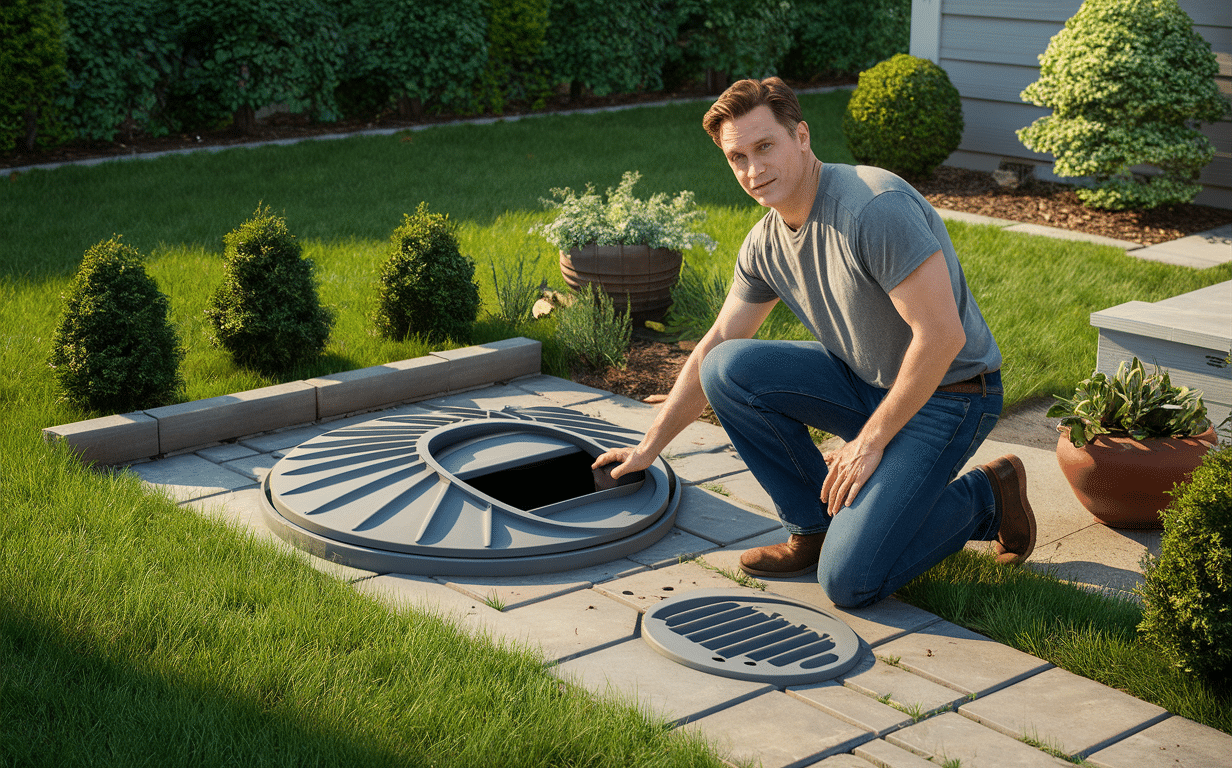
Soil Probe
A soil probe is a handy tool for finding the edges of your septic tank. By gently probing the ground, you can detect the tank’s outline without causing damage.
Septic Tank Map
Your home’s property records or building plans may include a septic tank map. This map can save you a lot of time and effort.
Consult Local Records
Your local health department or municipal office often keeps records of septic system permits, which can provide clues to your tank’s location.
| Tool | Description | Cost Range |
|---|---|---|
| Soil Probe | A rod used to detect the tank’s edges | $20 – $50 |
| Septic Tank Map | Maps available in property records or building plans | Free |
| Local Records | Information from health department or municipal office | Free to minimal |
Locating And Accessing The Septic Tank Safely
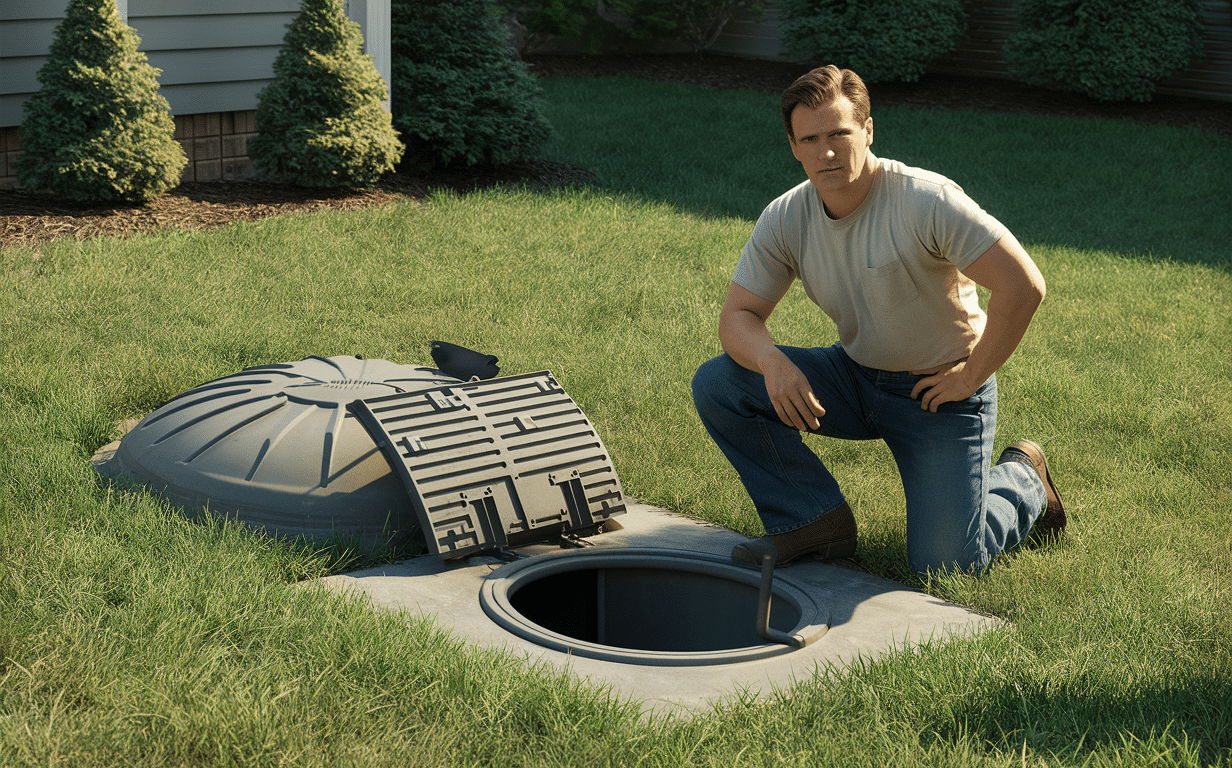
Clear the Area
Before you begin, make sure the area is clear of debris and obstacles.
Locate the Lid
Once you’ve found the general area of the septic tank, use the soil probe to find the lid. It’s typically about 1-3 feet below the surface.
Dig Carefully
Use a shovel to dig around the lid carefully. Be cautious not to damage any pipes or the tank itself.
Safety First
Always wear gloves and take necessary precautions when opening the septic tank lid. Harmful gases can escape, so it’s vital to be prepared.
When to Call a Professional
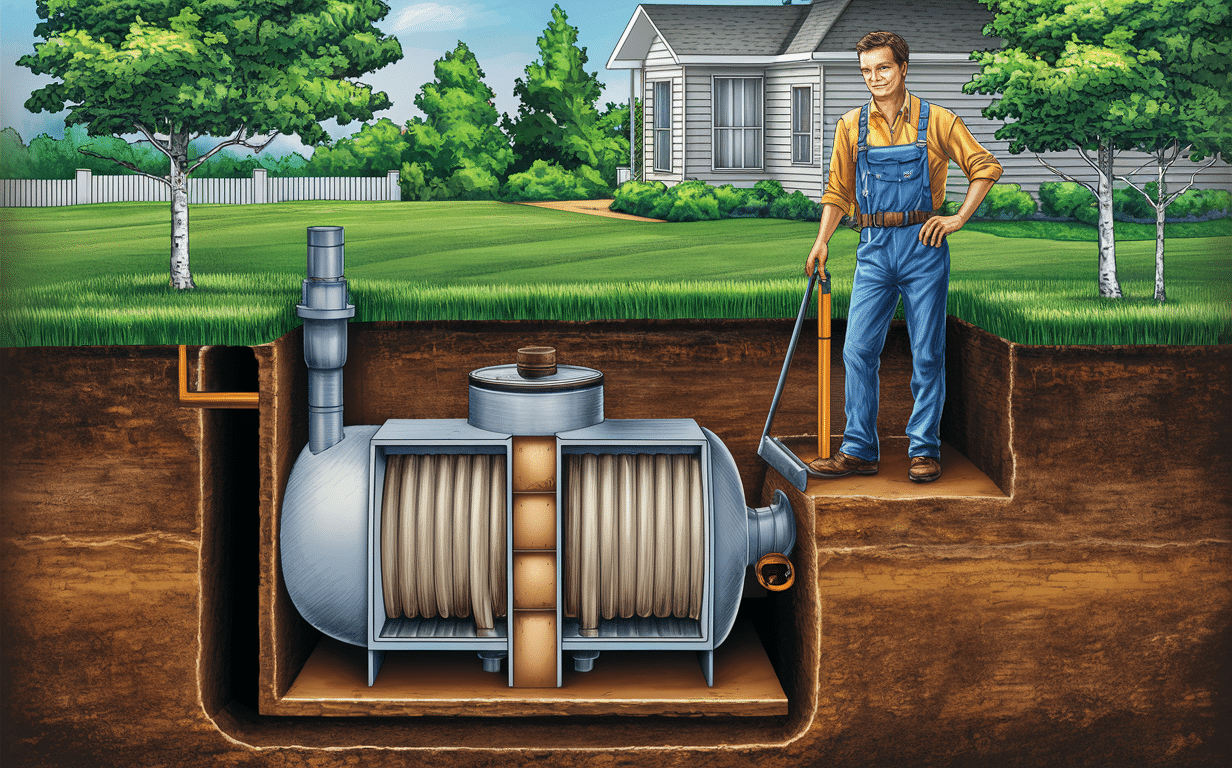
Sometimes, locating and accessing your septic tank can be too challenging or risky to attempt on your own. Here are scenarios where a professional’s help is invaluable:
- Obstructed Access: If your septic tank is located under a structure or large obstacle.
- Advanced Tools Needed: If specialized equipment like cameras or advanced probes are required.
- Health Risks: When dealing with potential exposure to harmful gases or contamination.
List of Situations Requiring Professional Help
- Limited Access: Tanks under patios, driveways, or heavy landscaping.
- Health Concerns: Risk of exposure to harmful gases.
- Complex Systems: Advanced or large systems requiring specialized tools.
Regular Maintenance Tips
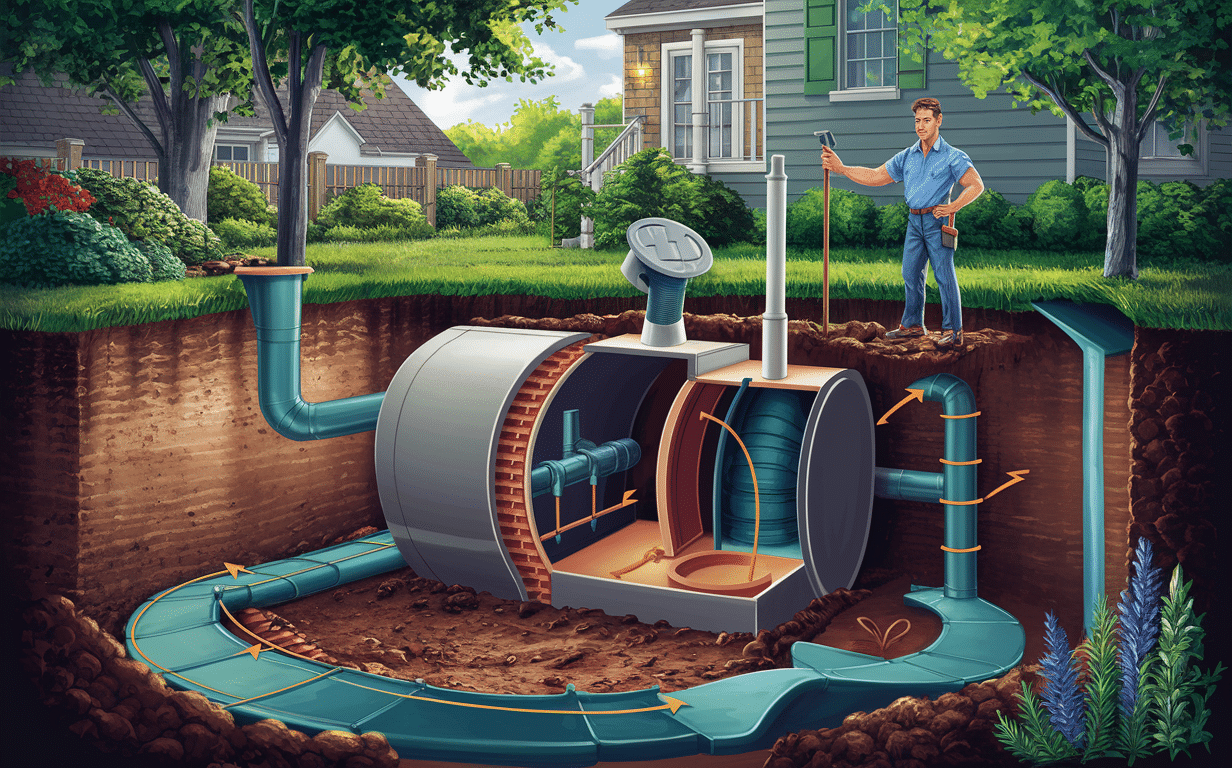
Maintaining your septic system is crucial for longevity and efficiency. Here are some regular maintenance tips:
Regular Pumping
Have your tank pumped every 3-5 years, depending on usage and tank size.
Inspections
Schedule annual inspections to catch potential issues early.
Proper Usage
Avoid flushing non-biodegradable items and use septic-safe products.
Grease and Chemicals
Keep grease and harsh chemicals out of the system to prevent clogs and damage.
- Septic systems are essential in households and businesses that are not connected to a centralized sewage system. According to the United States Environmental Protection Agency (EPA), around 25% of the American population relies on septic systems (Source).
- Locating and accessing a septic tank is crucial for its maintenance and proper functioning. The EPA recommends septic tank inspections every three years (Source).
- The average cost of septic tank pumping and inspection ranges from $250 to $700, according to HomeAdvisor (Source).
- Septic tanks typically have a capacity of 1,000 to 2,500 gallons (3,785 to 9,463 liters) (Source).
- The location of a septic tank varies, but it is usually found near the house, often in the backyard. The EPA suggests consulting the as-built drawings or contacting a septic professional for precise location information (Source).
- Accessing a septic tank requires proper safety precautions, including wearing protective clothing, using a breathing apparatus, and ensuring the tank is empty or nearly empty before entry (Source).
Cost of Septic Tank Services
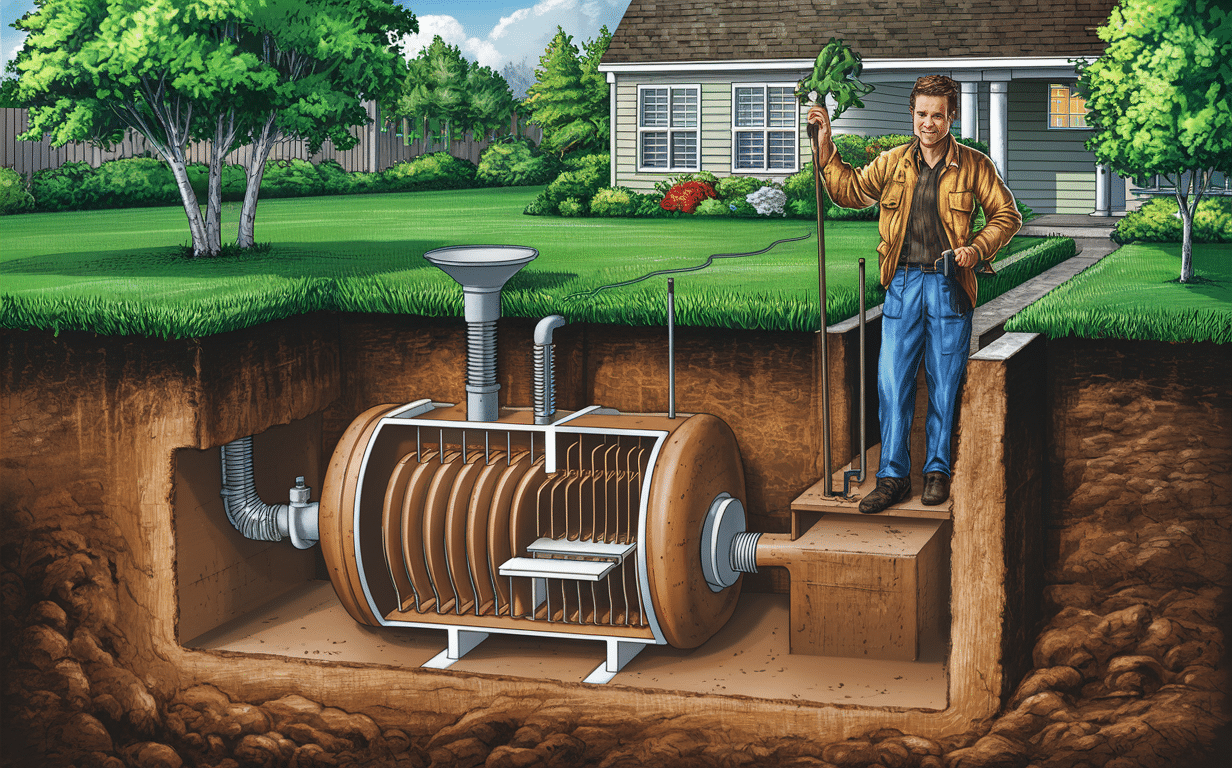
Understanding the cost of septic tank services can help you budget for regular maintenance. Here is a brief overview:
| Service | Average Cost |
|---|---|
| Septic Tank Pumping | $300 – $500 |
| Septic System Inspection | $100 – $300 |
| Septic Tank Replacement | $3,000 – $7,000 |
Budgeting for Maintenance
Regular maintenance can save you money in the long run by preventing costly repairs or replacements. Allocate a portion of your home maintenance budget for septic services.
Environmental Impact of Septic Systems
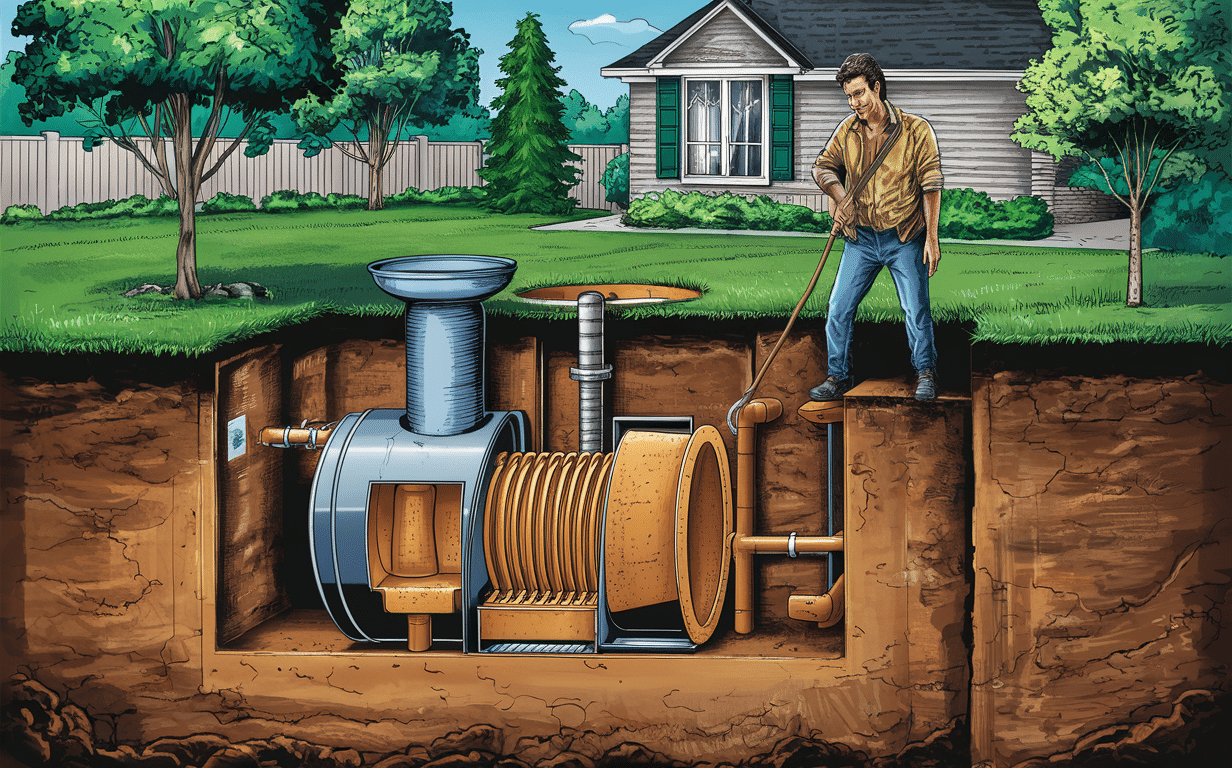
Proper maintenance of your septic system not only benefits you but also the environment.
Preventing Contamination
A well-maintained septic system prevents groundwater contamination. This is crucial for protecting drinking water sources and local ecosystems.
Sustainable Practices
Using septic-safe products and reducing water usage can help maintain the balance of microorganisms in your system, promoting a healthier environment.
Conclusion
Locating and accessing your septic tank doesn’t have to be a daunting task. With the right tools and knowledge, you can ensure your system is well-maintained and functioning efficiently. Remember, regular maintenance not only saves you money but also protects the environment.
Ensure you know where your septic tank is and keep a maintenance schedule to avoid any unexpected issues.
For professional help with your septic system, call United Sewer & Septic at (888) 845-CLOG or visit us online to schedule a service.

